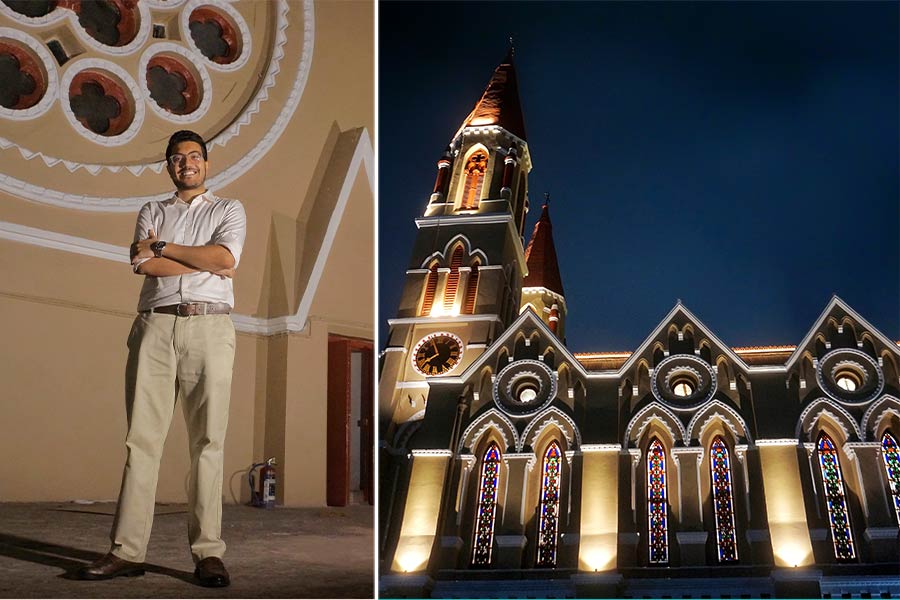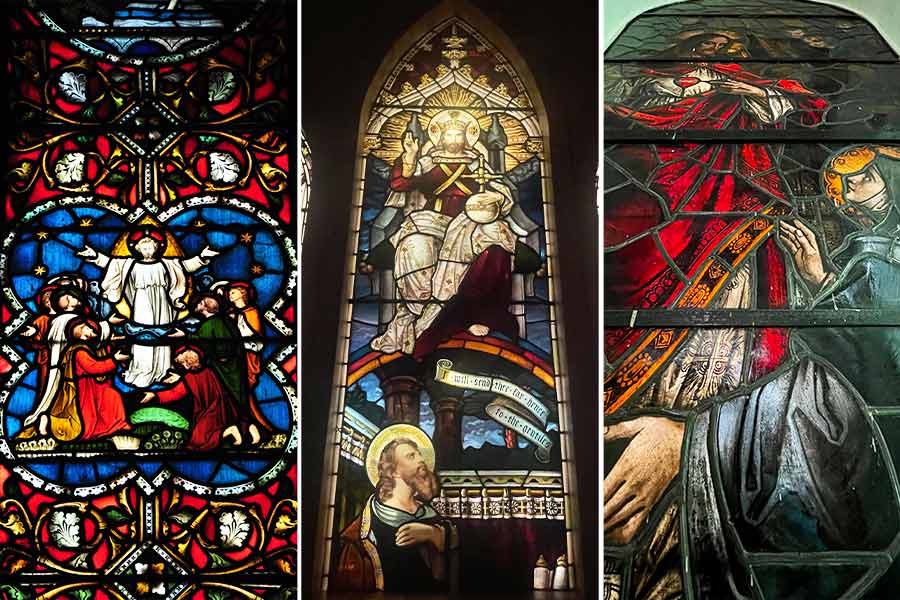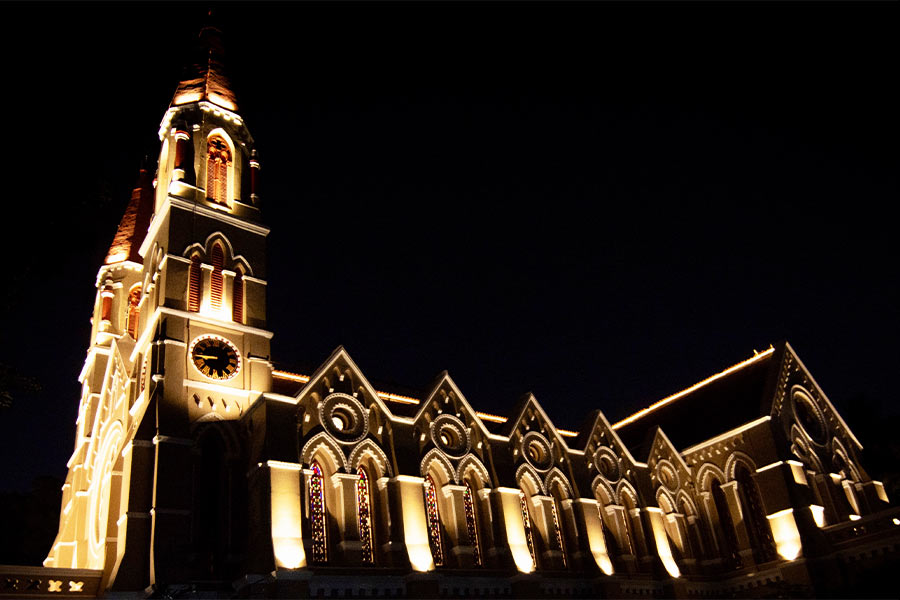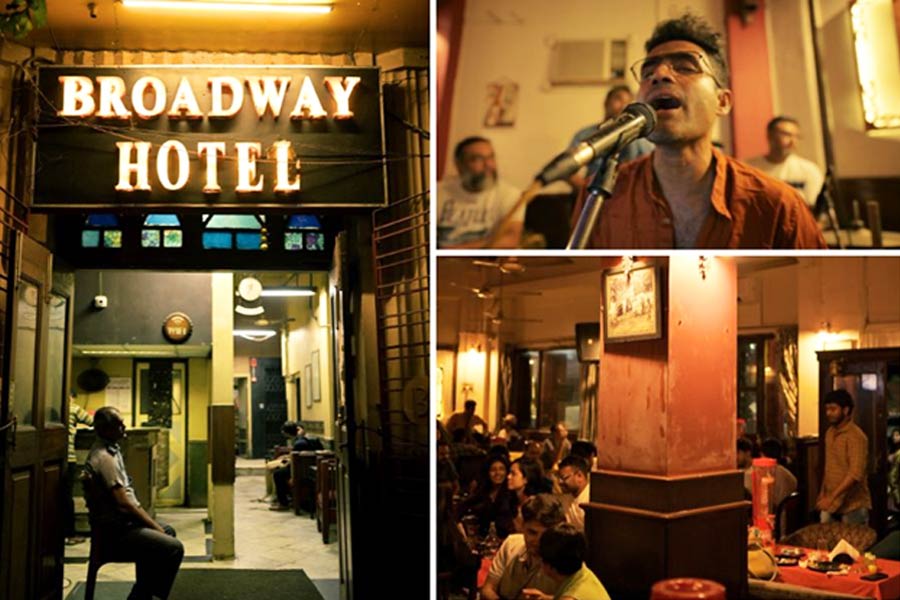In the past few months, if you have been out for a stroll or a drive in the evening or night around north and central Kolkata, chances are that you have stopped and gaped at an illuminated heritage building. The Calcutta Illumination Project (CIP) has been behind this, with a vision to light up heritage properties in the city. My Kolkata caught up with Tushar Bhala, the principal lighting designer at Hind Lighting (among two lighting designers), which has been working with Kolkata Restorers to foster the city’s newfound radiance.
Finding the spark of creativity
The Bhalas have been one of Kolkata’s biggest light vendors since 1957. Their shop, Hind Lighting Studio (earlier Hind Electric & Trading Co), is among the oldest shops in Tiretti Bazaar. Tushar inherited his fascination for lights. He did postgraduate degree in lighting design from Singapore, and when he returned to Kolkata, he wanted to do something creatively fulfilling with his understanding of lighting. “Because of my exposure and education, there was a dissonance between the projects I wanted, and the ones I was getting. I became frustrated with the commercial nature of the business, and wanted to incorporate a sense of design into it. Things changed when my friend Meghdut Roychowdhury introduced me to Mudar Patherya, and told me about his vision to illuminate 500 structures in Kolkata,” said Tushar.

‘You can either accentuate a structure with lighting near the facade to enhance the architecture, or illuminate by lighting from afar. With St. James, we chose to accentuate, but with (in picture) St. Teresa’s we chose to illuminate,’ explained Tushar
At the time, Mudar had different people for light design, vendorship, installation, and delivery. This was a time-consuming process, and he was looking to optimise the operations. Tushar promised to consolidate everything in one place, and the two began a partnership at the start of the year. This project struck a chord with him, since he had always harboured a dream of illuminating St. Paul’s Cathedral as a child. “I still remember Mudar telling me, ‘When you’re backed into a corner, make sure that you leave it a better corner.’ This vision is what drove us to dive into this project, hoping to recreate the Bengal of yore.”
Illuminating Kolkata
Tushar’s first project with CIP was Bible Society of India in Dharmatala. When he began conceptualising the structure’s illumination, he had a sense of belonging. “I’d left this creative aspect of lighting in Singapore, but that first project made me feel like a child again. These heritage sites are what people die to experience, and they inspire us to create. Seeing our design being executed within the same week gave me chills,” he said, beaming as he recalled the project.
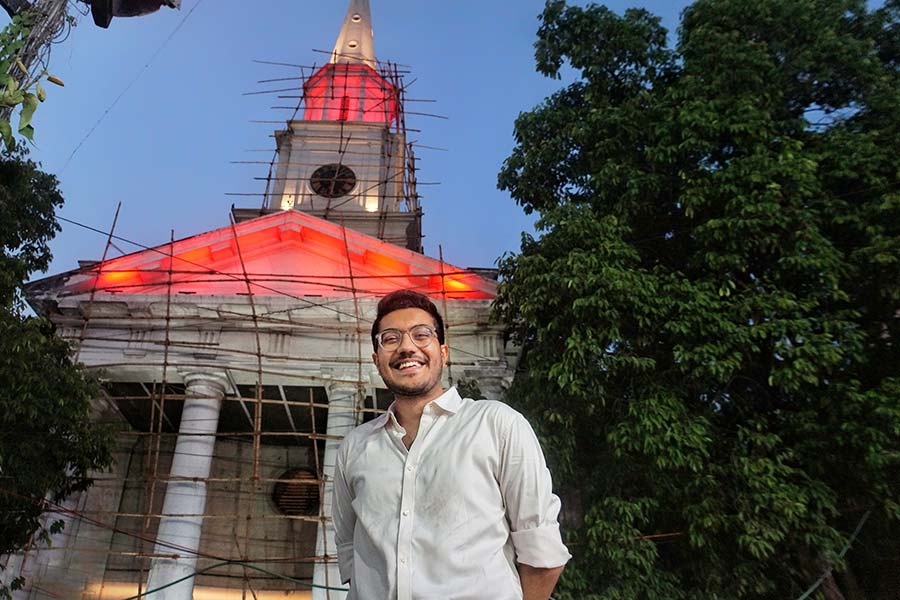
Tushar has especially developed a technology to regulate the lighting at St Andrew’s Church so that the colour temperature will be 1800 Kelvin, to mimic the 5am sunrise
From that point, there was no looking back. Over the last three months, he has completed 15 similar projects including the Royal Insurance Building, St. James’ Church, and Royal Calcutta Turf Club. CIP, under the leadership of Mudar, has approvals for three other projects, with four more proposals in the pipeline. “When we started, a project would take three weeks from design to execution. Now, we do three projects in one week,” he chuckled.
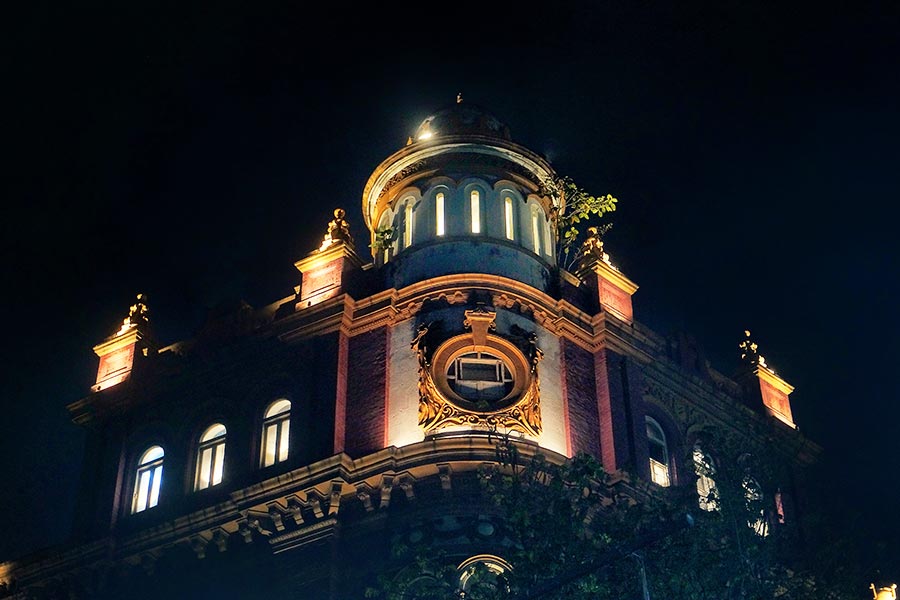
The Royal Insurance Building is among Tushar’s favourite projects
Tushar candidly shared that while Mudar’s initial plan was to complete 500 projects in five years, he hopes to reach the number in two years. “We are constantly trying to get ahead of the curve. Even if three projects are being executed in a week, we are working on four more in the backend. At any given point of time, we have six places at different stages of development. By this point, it’s a part of our DNA, where we see a building and know that it could be a part of the project!”
Light and shadow
Behind every CIP project allotted to Tushar is an entire team from Hind Lighting Studio. As the principal designer, Tushar leads two other designers into doing a recce and taking pictures of the site. Three product experts develop the technical specs after factoring in wattage, beam angle and colour temperature. Finally, three groups of electrical contractors work on the site with designs and materials to get the building lit up.
The key to his genius is how Tushar treats every structure as a canvas, and illumination as an art. “Lighting should never be in your face. There is no one-size-fits-all. For structures with intricate architecture, we illuminate it from afar, but for more minimal buildings, we merely accentuate it from up-close. Shadow is just as important, personifying your past, while light is your future. The work of a lighting designer is to take people to the past of the structure,” he added.
However, the project has come with its share of challenges. Since many of the structures have never been maintained, lights often don’t fall properly. Besides this, many styles of architecture have never been illuminated before, so there is no research material to refer to. “The old churches were built with stained glass (panels), so that the sunlight would bring coloured shadows inside. We were among the first people in the world to try the opposite. At Old Mission Church, we threw lights onto the window from the opposite building to create the same effect. A lot of these light designs involve problem solving, where I have to bring in all of my life’s experience,” explained Tushar.
Another major challenge is the operational cost. Tall structures need lights of very heavy wattages, which are not financially sustainable. Lighting up a 10-foot-tall structure generally needs 100w lights, which can often be difficult on the client. “If we use 10 lights of 100w, the monthly bill is Rs 1,260 just to light up one wall. This is unaffordable. We incorporated specialised lenses with our fittings which change the beam angle to cover more height. Now, we can achieve the same results with a fifth of the wattage.” He explained that they lit up a 45 feet-wide dome in Dalhousie, with just one 18w light.
Giving back some sparkle
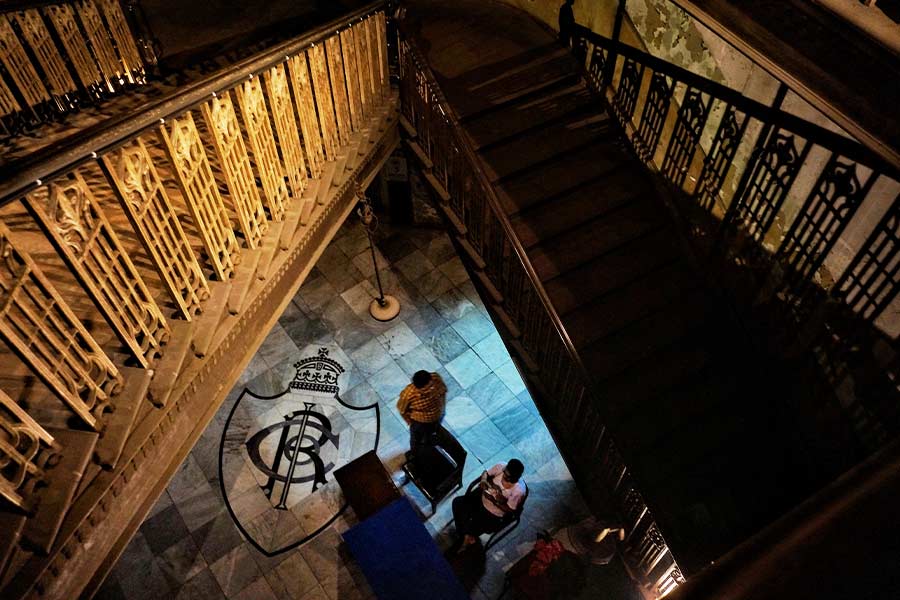
Tushar’s magnum opus is the inner atrium of the Royal Insurance Building, where Hind created a honeycomb lens with lighting to prevent glare, while enhancing shadows
Tushar confesses that CIP is a passion project, and there is no huge monetary incentive, but is a passion project. His idea is to showcase a different side of Kolkata to its youth that largely frequents restaurants and clubs. It is a recognition of what the city can offer, if one opens their eyes. “We hardly earn anything from CIP, and it takes up a lot of our time. Yesterday, we were at St. Andrews Church for four hours, trying to get the lights fixed. I had 45 missed calls, but it doesn’t matter, because 50 people’s sleepless nights have gone into this. There is so much joy when electricians can tell their families, ‘Amra ei building e kaaj korechi!’ (We worked on this building) The effort has already started paying off. Tushar shares that every time he puts up a story of a gorgeous place, many people are shocked to find that it is in Dharmatala, Entally or Dalhousie.
His biggest driving force has been his wife, Vaani. Having lived in a heritage building all her life, she has always loved Kolkata’s architecture. She is an integral part of CIP, overseeing the branding, marketing and storytelling behind every structure. “When I told Vaani that CIP was on the table but it didn’t make business sense, she snapped, ‘Everything is not about business. If you don’t do it, I will!’ I’m just the person connecting the wires, but Vaani understands and develops the beautiful story around the place,” explained Tushar. This is integral to the narrative that CIP is trying to develop around Kolkata’s architecture, and a project is only taken up if there is a story behind it.
Another huge motivation for Tushar, is to show his grandfather a new side to the Kolkata he’s seen being built. “My grandfather doesn’t go out much, but I hope to take him around Tiretti Market and show him how Kolkata is being transformed every evening by his own company. Hind has taken so much from Bengal over the past 50 years. It’s time Hind gives back.”
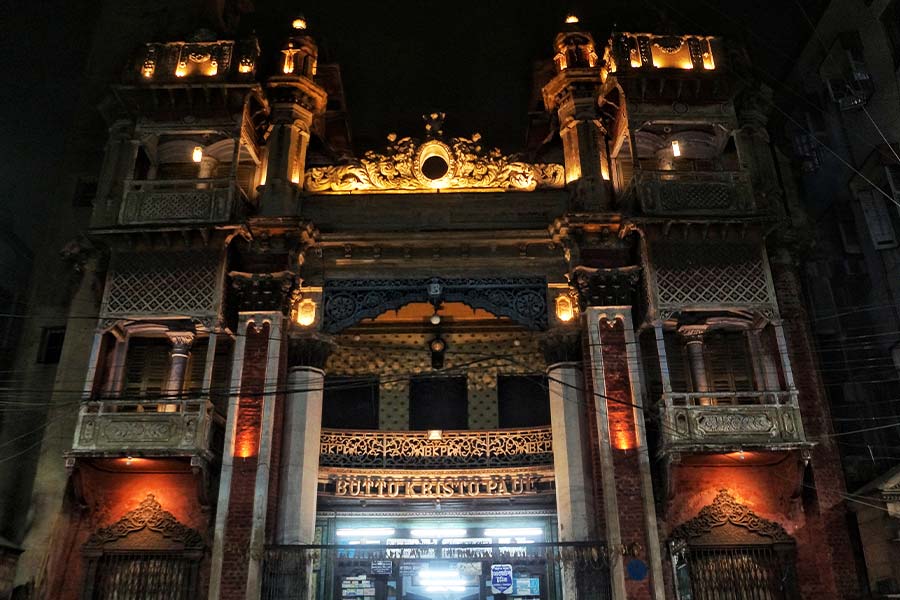
Inhabited by Paul’s family, B. K. Paul’s house was a tricky project, and CIP had to ensure that the operational costs would be kept to a minimum to make it viable. ‘We lit the entire building in under 180w, and gave the family 45-year-old Tiffany Glass Pendants as a gift’
Lighting the way ahead
Tushar admitted that while CIP may wrap up in a few years, the objective has always been much bigger than putting up a few lights. Long term, he sees it transforming into a cultural movement, which promotes nighttime tourism in the city. “We keep complaining that nothing happens in Kolkata, so it must be us, who change the narrative. We want to create cultural activities around these illuminated structures. Each of the places have their own DNA during the day, but after sunset, they must evolve.” Tushar’s eyes lit up as he visualised a Royal Insurance Building where the employees shut shop after work, and puppet masters put up a show of light and shadow; or the Christian community throwing open the doors of St. James’ Church during December evenings to teach carols to other communities. “It is important that the youth appreciates a different side of Kolkata. Stephen’s Court doesn’t end with Flurys and Peter Cat. If you look above their signages, you will see victorian columns, window facades and balconies. Where else can you get it? We hope to conceptualise night walks and drives that take people around these illuminated structures, and are a treat for art and history lovers,” he said highlighting the future of the project.
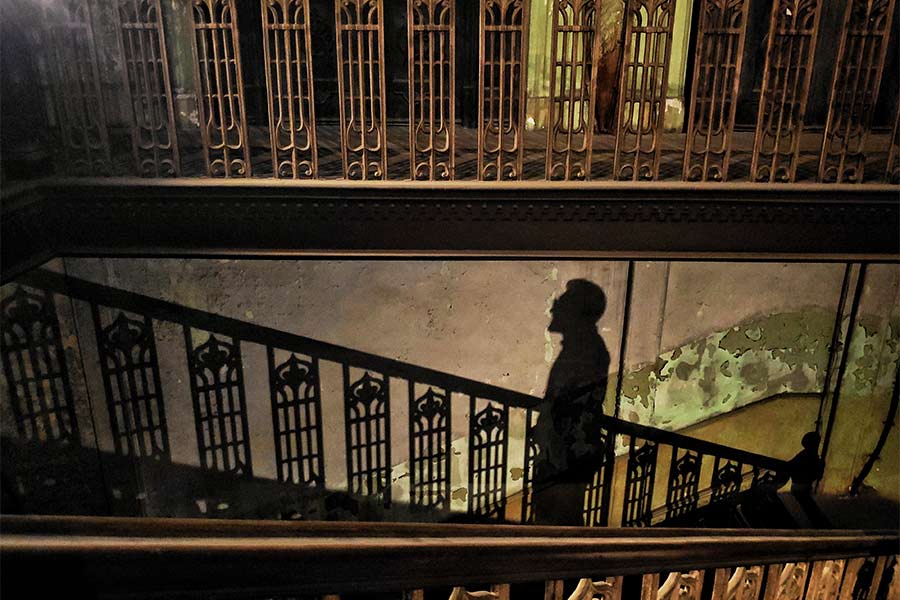
Calcutta Illumination Project is a passion project and eventually Tushar wants it to help transform the night tourism scene and the narrative of Kolkata
Under the leadership of Mudar and Kolkata Restorers, CIP also propels community development. Tushar cited instances where lighting up structures discouraged people from spitting and littering in their vicinity. “I saw watchmen refusing extra money for letting people park in these premises, and local cops proudly taking pictures with the illuminated places to post on Facebook. This is all of Kolkata’s property, and we need all hands on deck.”
Tushar’s passion is infectious, and it's hard not to get excited by his plans for the city. He revealed that the CIP’s biggest dream is to illuminate the LIC Building in Dalhousie. Tushar and Mudar hope to organise an operatic concert, with Usha Uthup singing, as instrumentalists play from its balconies. “When a building made by the British will be illuminated and adorned with music from a Bengali, the whole world will take notice. For us, this isn’t about creating lights, but an experience,” he signed off.
